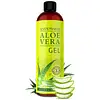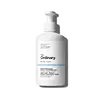What's inside
What's inside
 Key Ingredients
Key Ingredients

 Benefits
Benefits

 Concerns
Concerns

 Ingredients Side-by-side
Ingredients Side-by-side

Water
Skin ConditioningCaprylic/Capric Triglyceride
MaskingGlycerin
HumectantInulin
Skin ConditioningPropanediol
SolventIsodecyl Neopentanoate
EmollientArachidyl Alcohol
EmollientRhus Succedanea Fruit Wax
Sodium Hyaluronate
HumectantArginine
MaskingGlycine
BufferingAlanine
MaskingSerine
MaskingProline
Skin ConditioningThreonine
Glutamic Acid
HumectantLysine Hcl
Skin ConditioningBetaine
HumectantSodium PCA
HumectantPCA
HumectantXylitylglucoside
HumectantAnhydroxylitol
HumectantXylitol
HumectantGlucose
HumectantMaltose
MaskingFructose
HumectantSucrose
HumectantTrehalose
HumectantSodium Lactate
BufferingUrea
BufferingAllantoin
Skin ConditioningBehenyl Alcohol
EmollientArachidyl Glucoside
EmulsifyingPentylene Glycol
Skin ConditioningPolyacrylate Crosspolymer-6
Emulsion StabilisingXanthan Gum
EmulsifyingTrisodium Ethylenediamine Disuccinate
Tocopherol
AntioxidantCitric Acid
BufferingSodium Hydroxide
BufferingSodium Chloride
MaskingEthylhexylglycerin
Skin ConditioningPhenoxyethanol
PreservativeChlorphenesin
AntimicrobialWater, Caprylic/Capric Triglyceride, Glycerin, Inulin, Propanediol, Isodecyl Neopentanoate, Arachidyl Alcohol, Rhus Succedanea Fruit Wax, Sodium Hyaluronate, Arginine, Glycine, Alanine, Serine, Proline, Threonine, Glutamic Acid, Lysine Hcl, Betaine, Sodium PCA, PCA, Xylitylglucoside, Anhydroxylitol, Xylitol, Glucose, Maltose, Fructose, Sucrose, Trehalose, Sodium Lactate, Urea, Allantoin, Behenyl Alcohol, Arachidyl Glucoside, Pentylene Glycol, Polyacrylate Crosspolymer-6, Xanthan Gum, Trisodium Ethylenediamine Disuccinate, Tocopherol, Citric Acid, Sodium Hydroxide, Sodium Chloride, Ethylhexylglycerin, Phenoxyethanol, Chlorphenesin
 Reviews
Reviews

Ingredients Explained
These ingredients are found in both products.
Ingredients higher up in an ingredient list are typically present in a larger amount.
Citric Acid is an alpha hydroxy acid (AHA) naturally found in citrus fruits like oranges, lemons, and limes.
Like other AHAs, citric acid can exfoliate skin by breaking down the bonds that hold dead skin cells together. This helps reveal smoother and brighter skin underneath.
However, this exfoliating effect only happens at high concentrations (20%) which can be hard to find in cosmetic products.
Due to this, citric acid is usually included in small amounts as a pH adjuster. This helps keep products slightly more acidic and compatible with skin's natural pH.
In skincare formulas, citric acid can:
While it can provide some skin benefits, research shows lactic acid and glycolic acid are generally more effective and less irritating exfoliants.
Most citric acid used in skincare today is made by fermenting sugars (usually from molasses). This synthetic version is identical to the natural citrus form but easier to stabilize and use in formulations.
Read more about some other popular AHA's here:
Learn more about Citric Acid